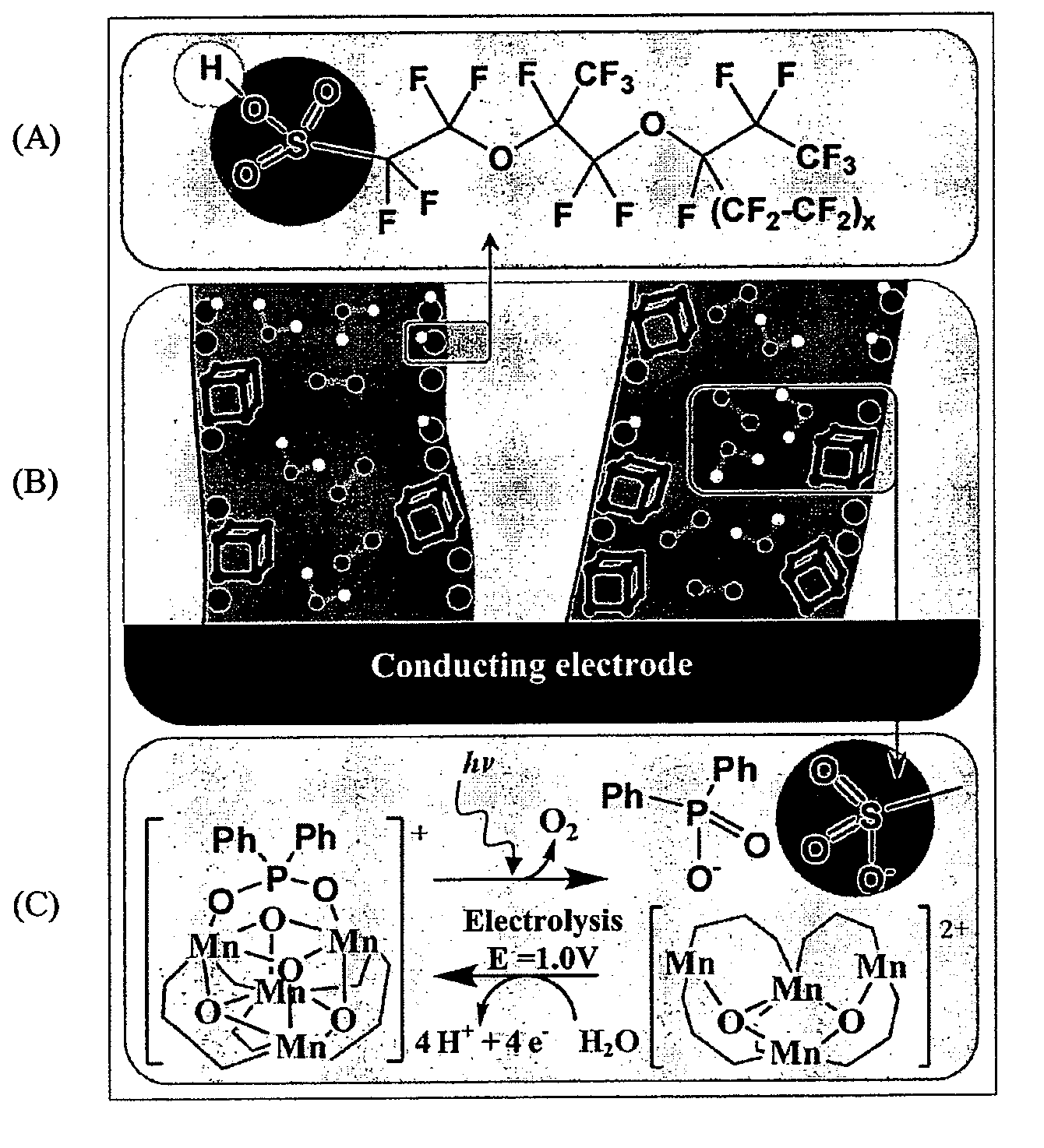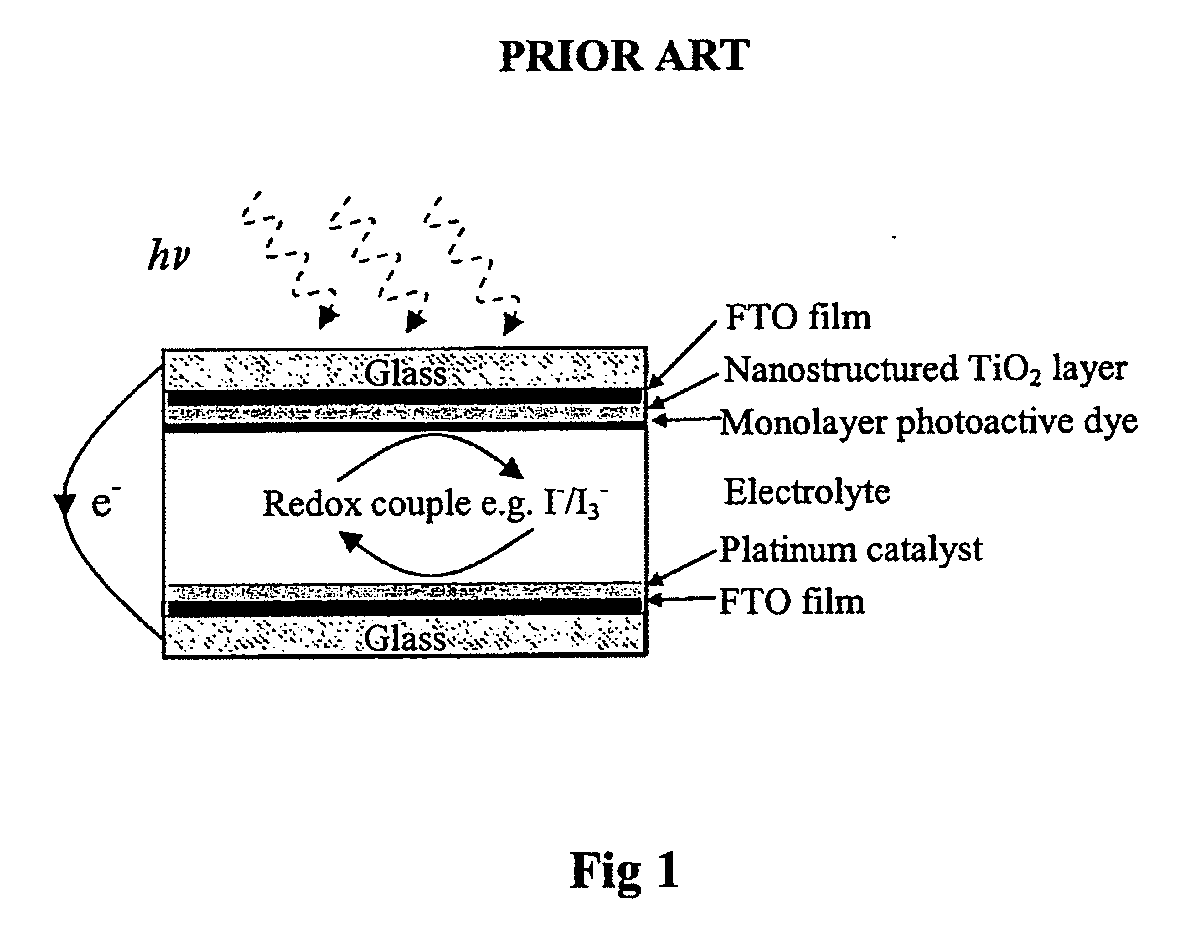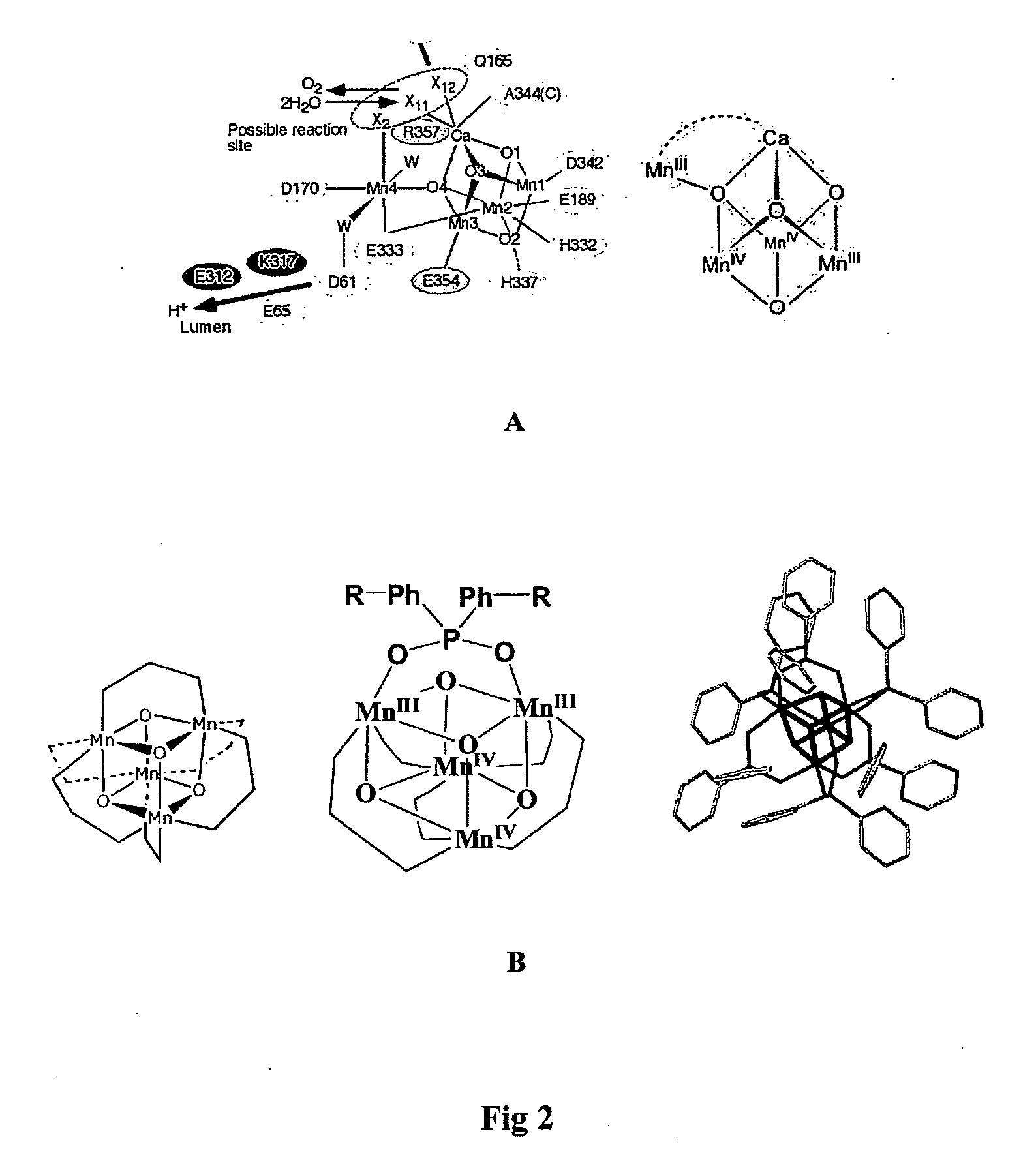Water Oxidation Catalyst
a water oxidation catalyst and catalyst technology, applied in the field of manganeseoxo clusters, can solve the problems of not being able to realize the potential of solar-produced hydrogen, limiting the energy absorption range of ultraviolet light, and no practical and economic catalytic system exists to facilitate this reaction. , to achieve the effect of rapid catalyst reformation
- Summary
- Abstract
- Description
- Claims
- Application Information
AI Technical Summary
Benefits of technology
Problems solved by technology
Method used
Image
Examples
example 1
Doping of the catalytic Groups into the Support Substrate
Stationary Voltammetry Oxidation of 1 and 2 in Nafion Membranes
[0123]The cationic cubane catalyst 1+ was doped into a Nafion film by immersion of a cast Nafion membrane in a solution of [Mn4O4L′6]ClO4 (complex 1+) in acetonitrile (CH3CN). Voltammetric detection of the redox transition 1 / 1+, previously observed for 1 in CH2Cl2 solvent (0.1 M Bu4NPF6) confirmed the doping of the cubane into the Nafion film and established charge transfer between the catalyst and underlying conducting electrode.
[0124]2+ was incorporated into the Nafion membrane by immersing the cast membrane in a solution of 2+ (0.5 mM in CH3CN). Once incorporated, doping success was observed by conducting cyclic voltammetry experiments on the doped membranes immersed in a working solution of H2O (0.1 M Na2SO4) and cycling around the 2 / 2+ redox process. The oxidation couple is not observed for membranes doped with solutions of 2.
[0125]The electrochemically genera...
example 2
Evidence of the Catalytic Groups Catalysing the Oxidation of Water
Stationary Voltammetry Catalysis of Water Oxidation
[0127]In solution, no further oxidation processes were observed for 2 between 1 V and the solvent limit of CH2Cl2 (0.1 M Bu4NPF6) at approximately 2 V vs Ag / AgNO3. FIG. 5 displays the oxidation of 2+ suspended in Nafion immersed in aqueous 0.1M Na2SO4 and sweeps up towards the water oxidation potential (1.4-1.6 V). As the potential approaches the water oxidation potential the current from a 2+ doped Nafion coated electrode increases at a significantly steeper gradient than the current of the Nafion coated electrode and the bare electrode.
[0128]At the oxidation potential of water in a 10% water / CH3CN (0.1 M Bu4NNO3) solution the current from the Nafion doped with 2+ electrode is significantly greater than the Nafion coated and uncoated electrode, peaking at approximately 1650 mV. Below this potential the current from an uncoated glassy carbon electrode in 10% water CH3...
example 3
Peak Excitation Wavelengths and Light Intensity
[0132]Monochromated light was used to determine the peak wavelength for photo-excitation of 2+ in Nafion. The photo-excited current (total excited current minus the background current) was measured over a range of excitation wavelengths, using a small Nafion coated platinum electrode. The Nafion only coated electrode showed relatively low photo-excitation with a small excitation peak at 350 nm. The Nafion doped with 2+ displayed significant photo-current from 325 nm to 525 nm (FIG. 5).
[0133]The peak excitation of the Nafion doped with 2+ was observed at 360 nm. The peak corresponds to the main ligand to metal charge transfer absorption observed in the electronic spectra of the cubane in solution. Furthermore the peak excitation corresponds to the peak in difference in absorption between 2+ and 27, suggesting that the activating energy provided by the light corresponds to the peak charge transfer of the oxidized cubane (2+). This adds fu...
PUM
| Property | Measurement | Unit |
|---|---|---|
| Electric potential / voltage | aaaaa | aaaaa |
| Hydrophilicity | aaaaa | aaaaa |
| Hydrophobicity | aaaaa | aaaaa |
Abstract
Description
Claims
Application Information
 Login to View More
Login to View More - R&D
- Intellectual Property
- Life Sciences
- Materials
- Tech Scout
- Unparalleled Data Quality
- Higher Quality Content
- 60% Fewer Hallucinations
Browse by: Latest US Patents, China's latest patents, Technical Efficacy Thesaurus, Application Domain, Technology Topic, Popular Technical Reports.
© 2025 PatSnap. All rights reserved.Legal|Privacy policy|Modern Slavery Act Transparency Statement|Sitemap|About US| Contact US: help@patsnap.com



